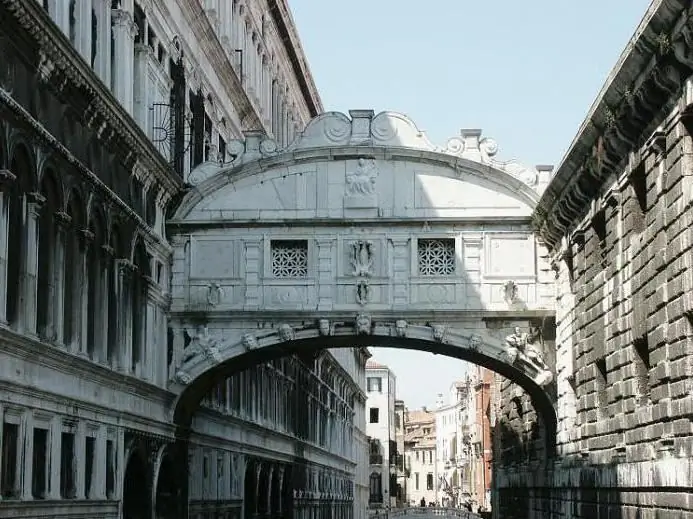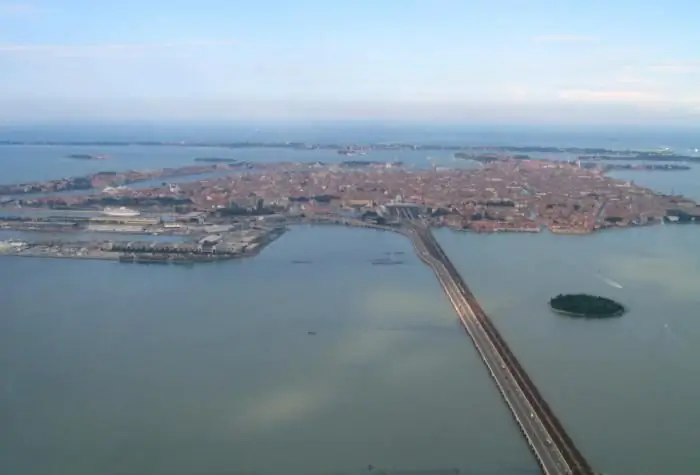- Author Harold Hamphrey [email protected].
- Public 2023-12-17 10:06.
- Last modified 2025-01-24 11:10.
All over the world there are a small number of historical buildings or structures that, for all their masterpiece, do not fit within the framework of orthodox stylistic definitions. These buildings are original symbols of cities, countries or religious denominations. The Doge's Palace in Venice falls into this category of iconic architectural masterpieces. It is his image that most often arises in the mind when it comes to Venice. In a sense, its creators were counting on such an effect.

Doge's Palace in Venice. Its history and style
This palace had to make a strong impression on everyone who sees it. It was intended to live and perform administrative and state functions for all the future rulers of Venice. And this unique city-state reached a high degree of power and influence by the beginning of the fourteenth century. They were ruled by elected rulers - doji. And the Doge's Palace in Venice was obliged to emphasize their status. In addition to the supreme rulers, many other state structures were to be located here: the Senate and the Grand Council, the Supreme Court and the secret police. Material resources made it possible to solve this problem. The city was the richest in the entire eastern Mediterranean. Doge's Palacein Venice was built over a quarter of a century. The best craftsmen and artists of the era worked on its construction. The professional secrets of craftsmanship in the Middle Ages were carefully guarded from outsiders and passed on only within one's clan or family dynasty, from father to son. That is why some construction and finishing technologies remain unsurpassed to this day.

To verify this, just look at what the Doge's Palace in Venice looks like inside. The luxury and expressiveness of the decoration of its interiors stagger the imagination. It organically corresponds to the general style of the entire architectural concept. And the building of the palace was included in all world textbooks of architecture as the brightest example and the highest rise of Italian Gothic, which immediately preceded the Renaissance. In Italian it is called "Palazzo Ducale". The Doge's Palace was very lucky in the sense that for several centuries it has not undergone significant restructuring and reconstruction. Even after a strong fire in 1577, it was restored in its original form. This allows us today to admire the original masterpiece, and not its subsequent distortions.

Palazzo Ducale: view from the sea
It is impossible not to note how successfully the Doge's Palace fits into the overall composition of the ensemble of the central Piazza San Marco in Venice. It is noticeable from afar, at the entrance to the sea lagoon in which the city is located. It was in this form that he appeared to the gaze of those who looked at him from the side.ships in merchant caravans from all over the Mediterranean. Just as exactly, modern tourists see it, striving for the lagoon, including in order to see the Doge's Palace in Venice. His photo traditionally adorns all advertising materials of tourist structures in all countries and on all continents.






